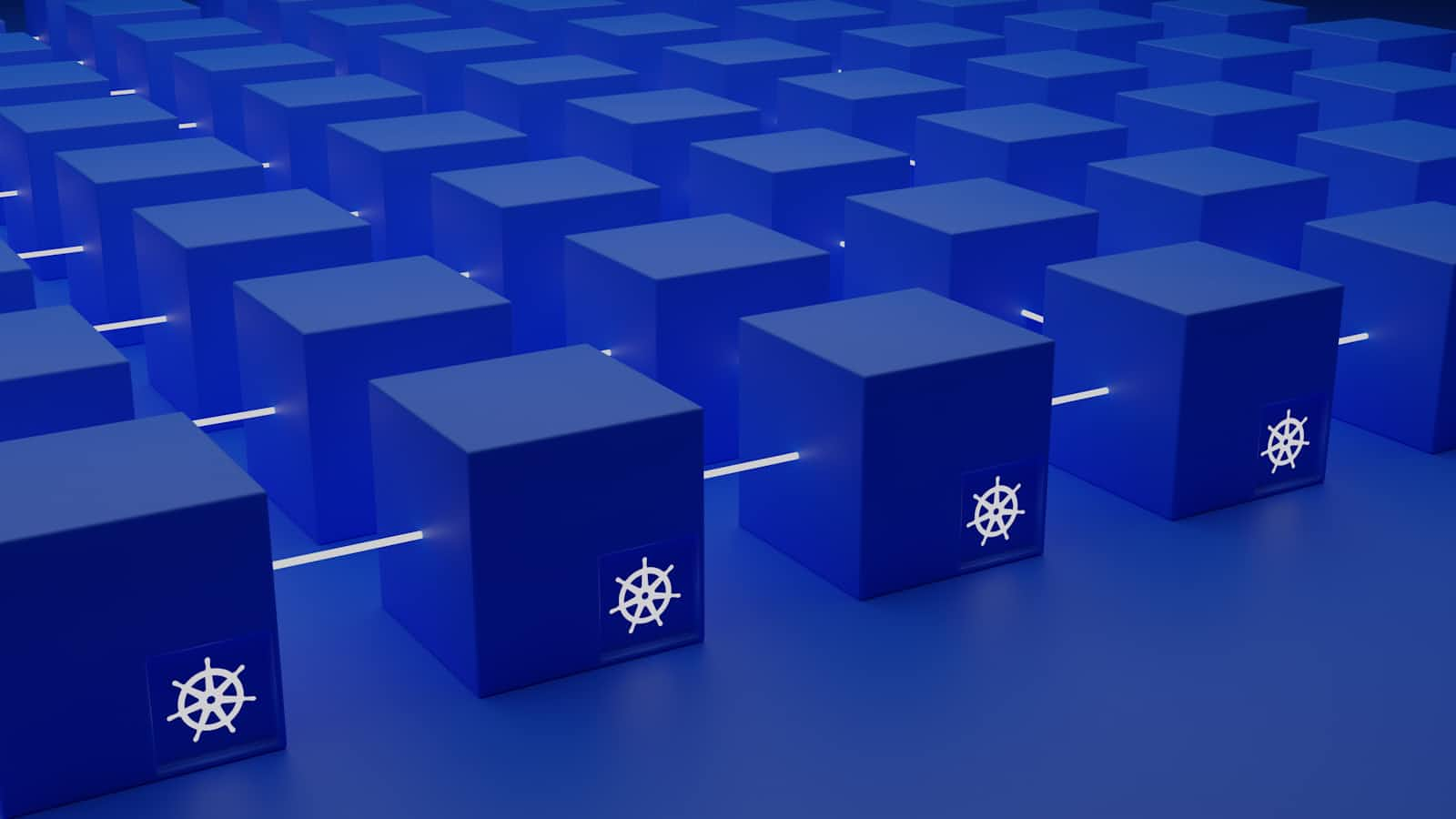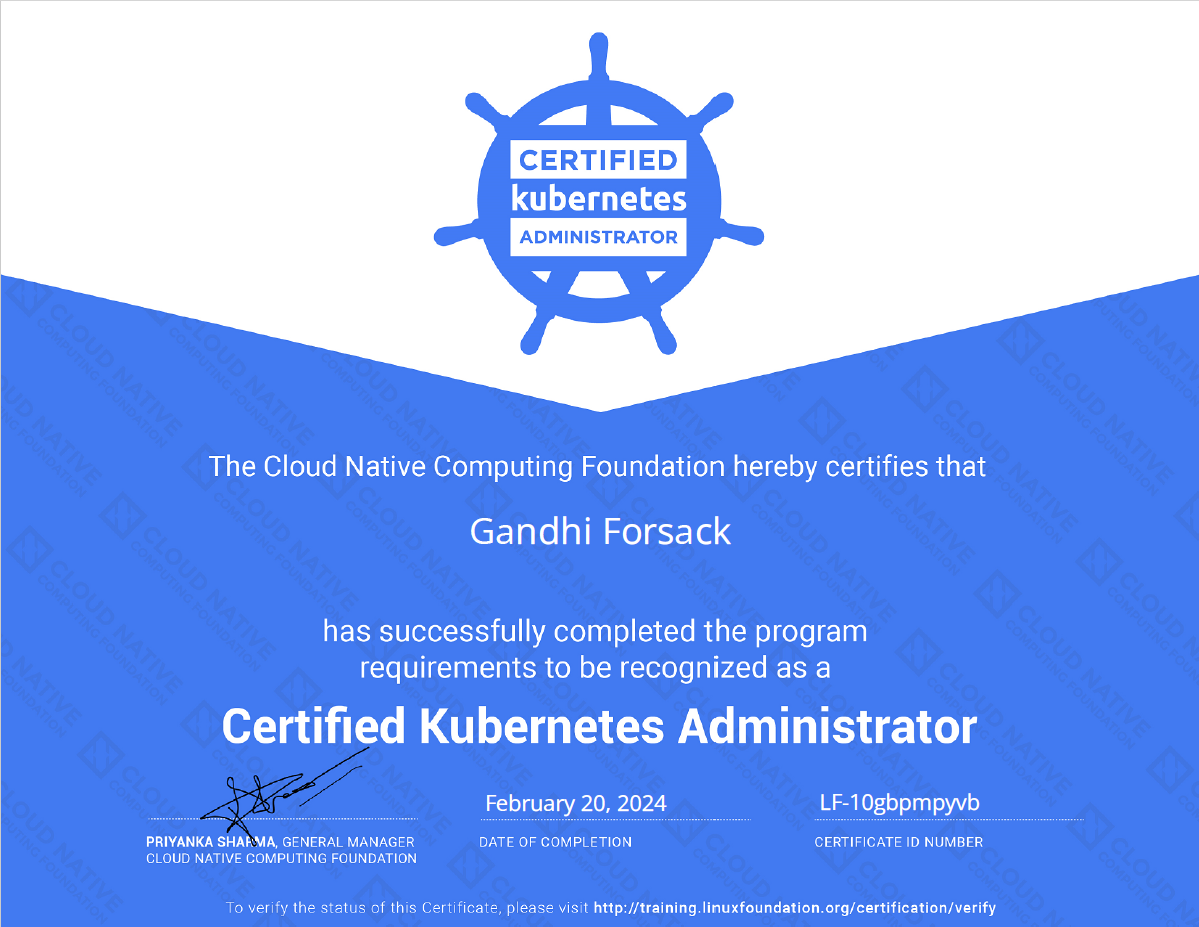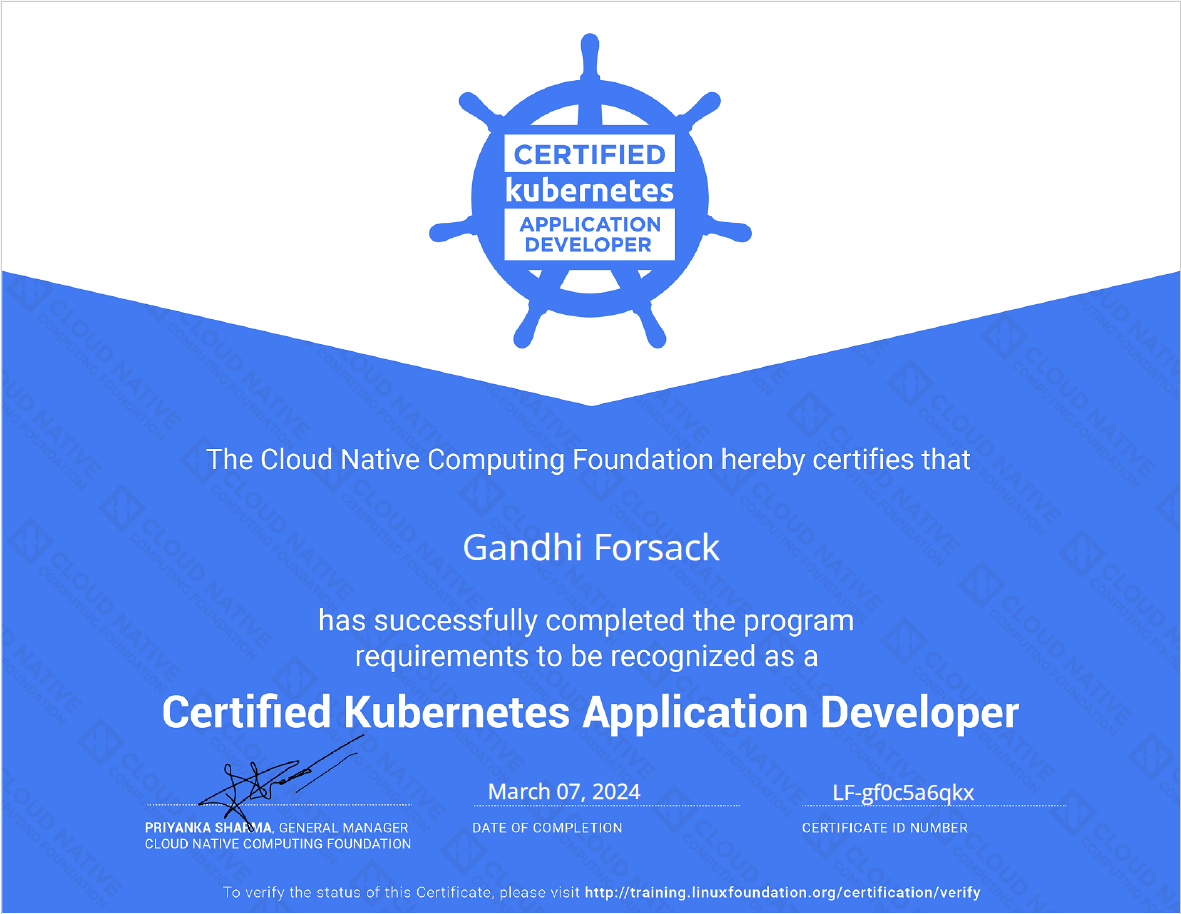CKA & CKAD Unveiled: My Path to Dual Certification
 Gandhi Forsack
Gandhi Forsack
Introduction
Embarking on the challenging yet rewarding journey to become a Certified Kubernetes Administrator (CKA) and Certified Kubernetes Application Developer (CKAD) is a significant achievement. In this blog post, I'll share my personal success story and provide valuable insights, resources, and tips that helped me conquer these Kubernetes certifications.
My Journey
Setting the Goal
Becoming proficient in Kubernetes was a natural step for me as I sought to advance my career in the ever-evolving world of container orchestration. Setting a clear goal of achieving both CKA and CKAD certifications provided me with a roadmap for my learning journey.
Resources I Used
1. Official Documentation
Mastering the Kubernetes official documentation is a game-changer. It's not just about what's in it, but also knowing how to swiftly navigate through it. This skill is crucial for acing the exams. The documentation is your guide—learn its terrain, and passing the CKA and CKAD exams becomes a smoother journey.
2. Online Courses
Platforms like KodeKloud, Linux Academy, A Cloud Guru, and Udemy offer comprehensive courses specifically designed for CKA and CKAD preparation. Opting for online courses was a pivotal part of my preparation, with KodeKloud standing out as a star performer. Their comprehensive courses not only provided in-depth lectures but also incorporated hands-on labs seamlessly. The beauty of KodeKloud's approach lies in having labs integrated into the course, eliminating the hassle of setting up your own cluster. This streamlined experience allowed me to focus on learning, seamlessly transitioning from lectures to practical application without the complexities of managing my own Kubernetes cluster.
3. Practice Environments
Leveraging practice environments like Killercoda and killer.sh allowed me to reinforce my understanding of Kubernetes concepts by working in real-time scenarios without the fear of breaking a production cluster.
Tips and Tricks
1. Time Management
- Both exams are time-sensitive, so efficient time management is crucial. Practice time-boxing tasks during your preparation to simulate the exam environment.
2. kubectl Mastery
- Becoming proficient with
kubectlcommands is not just about memorization; it's about strategic learning. Prioritize mastering imperative commands, as they can be time-saving superheroes during the exam. Understanding the nuances of imperative commands allows for efficient and quick interactions with the Kubernetes cluster, a valuable skill when time is of the essence in the exam environment.
3. Exam Simulators
Kubernetes is best learned by doing. Regularly practice with a hands-on approach to solidify your understanding of concepts and reinforce your problem-solving skills. I highly recommend using exam simulators as a crucial part of your preparation. Personally, I found killercoda and killer.sh simulators to be immensely valuable. While both provided a realistic exam environment, it's worth noting that killer.sh was notably more challenging than the actual exams, making it an excellent tool for honing your skills to the highest level.
Additionally, platforms like KodeKloud offer specialized practice exam sets for each certification. These sets are tailored to mirror the actual exam experience, providing a diverse range of tasks to ensure you are well-rounded in your knowledge and application of Kubernetes concepts.
What to Expect During the Exam
1. Check-in Process
- Plan to start this process at least 15-30 minutes before your scheduled exam time. The check-in process involves verifying your identity, confirming your testing environment, and ensuring you meet the exam requirements.
2. Allowed Items
In both CKA and CKAD exams, candidates are permitted:
Access Kubernetes documentation: https://kubernetes.io/docs/ and subdomains.
Access Kubernetes blog: https://kubernetes.io/blog/ and subdomains.
CKAD ONLY: Explore Helm documentation at https://helm.sh/docs.
Search Function: Use the search function on https://kubernetes.io/docs/, limited to matching domains.
Additionally, candidates are allowed a clear bottle of water during the exam. These provisions aim to create a fair testing environment while ensuring candidates have the necessary resources for success.
3. Using the Right Context
- During the exam, pay close attention to the context in which tasks should be completed. Using the correct context, namespace, or cluster is crucial for executing commands accurately.
4. Navigating the Exam Interface
- Practice navigating through the exam interface and become comfortable with the provided tools. This familiarity will save precious time during the actual exam.
5. Managing Time Effectively
- The exams are time-sensitive, so use your time wisely. Start with tasks you are confident about to build momentum, and don't hesitate to skip a challenging question and come back to it later.
Certification Achievements
To visually celebrate my success, here are photos of my hard-earned CKA and CKAD certifications:


Conclusion
Embarking on the expedition toward CKA and CKAD certifications has been both a challenging odyssey and a triumph of mastery over Kubernetes. By immersing myself in official documentation, online courses, and hands-on practice, I navigated through the intricate landscape of container orchestration, emerging victorious in both exams.
As I proudly display my CKA and CKAD certifications, the journey was not just about passing exams but about deepening my understanding of Kubernetes. The continuous learning ethos remains crucial in the swiftly evolving realm of cloud-native technologies.
I invite you to embark on your own certification adventure armed with these insights and practical tips. May they illuminate your path, helping you overcome obstacles and achieve success in your pursuit of CKA and CKAD certifications. Happy learning, and may your Kubernetes journey be as rewarding as mine has been!
Subscribe to my newsletter
Read articles from Gandhi Forsack directly inside your inbox. Subscribe to the newsletter, and don't miss out.
Written by

Gandhi Forsack
Gandhi Forsack
Technical Consultant